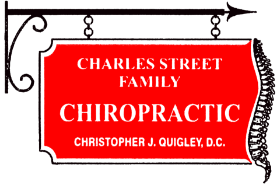Understanding Lumbar Kyphosis: Causes, Symptoms, and Treatment
Lumbar kyphosis refers to an abnormal curvature of the lumbar spine, where the normal lordotic (inward) curve becomes exaggerated, leading to a forward bending of the lower back. While a slight curve in the lumbar region is normal, excessive kyphosis can result in postural deformities and functional impairments. This condition, although less common than thoracic kyphosis, can have significant implications for spinal mechanics and overall health, especially when left untreated.
One of the primary etiologies of lumbar kyphosis is poor posture, particularly in individuals who engage in prolonged periods of sitting or slouching. Poor posture can cause imbalances in the spinal musculature, leading to overstretching of certain muscle groups and weakening of the paraspinal muscles, which contributes to abnormal spinal curvature. Additionally, degenerative changes in the intervertebral discs and facet joints, commonly seen in conditions like osteoarthritis and degenerative disc disease, can result in structural alterations that promote the development of kyphosis. As the intervertebral discs lose hydration and elasticity, they may collapse, causing an increased forward curvature of the lumbar spine. Another significant contributing factor is osteoporosis, a condition characterized by decreased bone mineral density, which can lead to vertebral compression fractures. These fractures, particularly in the lumbar vertebrae, can exacerbate spinal deformities, including kyphosis. Congenital conditions, spinal infections, or traumatic spinal injuries can also contribute to the development of lumbar kyphosis by altering spinal alignment.
Clinically, lumbar kyphosis manifests primarily through lower back pain, stiffness, and fatigue, particularly after prolonged periods of standing or sitting. As the curvature becomes more pronounced, individuals may experience difficulty maintaining an upright posture and notice a rounded appearance in the lower back. In severe cases, nerve compression due to changes in spinal alignment can result in radiculopathy, leading to symptoms such as leg weakness, numbness, or tingling sensations.
Management of lumbar kyphosis depends on the severity and underlying cause. In mild cases, conservative treatments such as chiropractic care, postural correction exercises, and strengthening of the core and paraspinal muscles are effective in reducing symptoms and preventing further progression. In cases linked to degenerative disc disease or osteoporosis, pharmacologic interventions, including analgesics, anti-inflammatory medications, and bisphosphonates for bone density preservation, may be indicated. In more severe cases, non-surgical spinal decompression may be considered to restore alignment, reduce pain, and alleviate nerve compression.
In conclusion, lumbar kyphosis is a condition that can arise from various etiologies, including poor posture, degenerative changes, and osteoporosis. While it can often be managed with non-invasive treatments, early diagnosis and intervention are essential to prevent long-term complications such as nerve damage and chronic pain. Individuals experiencing symptoms of lumbar kyphosis should reach out to Charles Street Family Chiropractic at 617-720-1992 to see how we can help you today!
